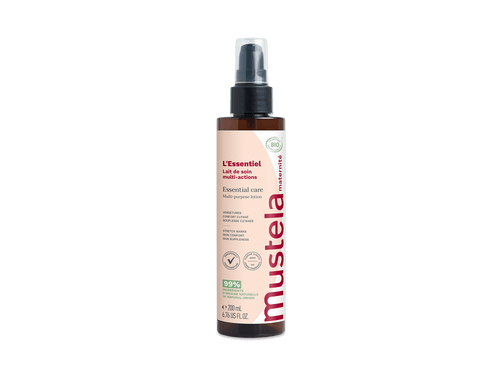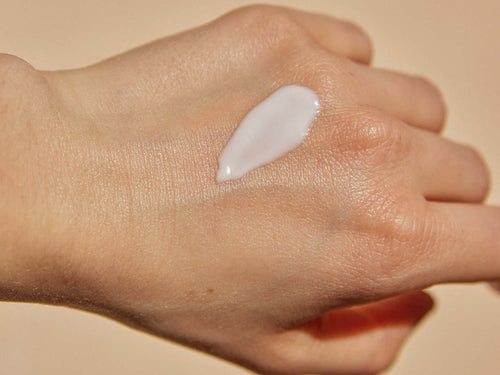Choosing the right birth method for you and your baby can be a daunting task. There are so many different options, it can be easy to get lost in the medical jargon and confused by the countless delivery practices. So we’re here to demystify the birth methods available today. We’ve created this guide so you can choose the method that’s best for you. Along the way, we’ll talk about the possible locations where you can give birth, the preparation practices you can try, and the pain management techniques available. First, though, let’s clarify one very important thing.

There Are Only Two Basic Birth Methods
When you peel back the layers of mystery surrounding labor and delivery, you’ll see that there are only two basic birth methods: vaginal delivery and cesarean section. Everything else is just a variation on these two methods. As you’ll see with vaginal delivery, you can change where you give birth and what tools and procedures are involved, but it is still a vaginal delivery. When it comes to cesarean section, your doctor will help determine if that is the right delivery method for you. Before we explore the many options involving vaginal delivery, let’s first define cesarean section so you’re familiar with the process.
Cesarean Section
A cesarean section, or c-section for short, is a surgical procedure performed when vaginal delivery is not possible. Sometimes, a cesarean section is planned beforehand. Sometimes, the doctor may switch to a cesarean section during a vaginal delivery if problems arise. The process is pretty straightforward. First, the mother is anesthetized. Then, an incision is made through the abdomen and the uterus to reveal the baby. Delivery occurs through the incision. The entire process can take anywhere from one to two hours and will require an extended hospital stay—between two and four days—after the baby is born.
Because a cesarean section is an invasive surgical procedure, delivery will occur in a hospital. Additionally, the pain management techniques associated with a vaginal delivery are largely moot because the mother will be placed under anesthesia.
As choices go, a cesarean section is pretty straight forward as you’ll be in a hospital under anesthesia. A vaginal delivery, on the other hand, can be a much more tailored experience. You can choose where you want to give birth and how you want to manage pain along with a whole host of other variables. Let’s explore some of those options now.
Natural Vaginal Delivery
Natural vaginal delivery is when your baby is born through the birth canal. This is the most common way to give birth because it is the body’s natural method. In fact, roughly sixty-eight percent of women give birth vaginally every year. Vaginal delivery reduces the risk that your infant will develop respiratory problems, asthma, food allergies, and lactose intolerance. That’s not to say that this birth method isn’t without risk. The baby can undergo physical trauma while passing through the birth canal. This can lead to bruising, swelling, and, in rare cases, broken bones. Complications during labor can also lead to additional problems if not properly handled.
As mentioned, natural vaginal delivery is a very common birth method. Sometimes, though, the mother needs a bit of assistance. This is where the first variation of this birth method occurs.
Assisted Vaginal Delivery

Assisted vaginal deliveries are still vaginal deliveries so this isn’t a completely new birth method. Rather, as the name implies, it depends on the type of assistance you receive from your doctor during labor. Those types of assistance are discussed below.
Induced Labor
A doctor will induce labor for a wide variety of reasons. Chief amongst these reasons are a past-due pregnancy, ruptured membranes, a smaller-than-average infant, or high blood pressure in the mother.
Episiotomy
An episiotomy is a surgical incision made in the skin between the vagina and the anus. It allows the baby’s head to pass more easily through the birth canal and helps prevent the skin from tearing.
Amniotomy
An amniotomy is the purposeful rupture of the amniotic sac. This rupturing is done for multiple reasons: to induce labor, to assess the baby’s health, or to check for the baby’s first stool.
Forceps Extraction
In a forceps delivery, an instrument shaped like salad tongs is used to grasp the baby’s head to guide it through the birth canal.
Vacuum Extraction
During a vacuum extraction, a soft cup attached to a vacuum pump is applied to the baby’s head to help guide it through the birth canal.
Now that we’ve discussed some of the variations in the basic natural vaginal birth method, let’s examine some other common choices available—birth location, preparation practices, and pain management.
Alternative Birth Locations

Barring an emergency, a cesarean section is always performed in a hospital. Vaginal delivery, on the other hand, can be performed pretty much anywhere. Common choices include home birth and water birth.
Home Birth
Giving birth at home can help soon to be mothers feel more comfortable and relaxed. A home birth also gives you more control over your labor position, the conditions of your environment, and the people present. Home birth is not without its risks, though. If serious complications arise, emergency care can be a long time coming. Most home births are supervised by a midwife who will provide coaching, basic procedures for delivery, and medical tools like oxygen, sutures, and an IV.
Water Birth
Water births can be done at home or in a hospital if the facility offers that option. In a water birth, you spend the duration of your labor in a waist-deep pool of clean, warm water. One of the biggest benefits of a water birth is that it greatly reduces the likelihood of needing an epidural to manage the pain. As your cervix dilates, the warm water helps to soothe and relax the body and mind. Some women may choose to leave the tub after the cervix is fully dilated, but many follow through with a true water birth, where the baby is delivered in the tub. The doctor or midwife will bring the baby’s face up into the air right after birth. Water birth eases the strain on the mother, and the transition for the baby is less of a shock to their system.
Preparation Practices & Pain Management
There are many preparation practices available these days. The variety means you can tailor your birthing experience to your own particular needs. All of the practices prepare you to deal with the stress and pain of labor.
Yoga
With prenatal yoga, you will learn to control your main respiratory muscle and diaphragm through breathing techniques and relaxation. You will also learn and practice helpful postures for use during labor. The breathing and relaxation techniques are also useful during delivery to help you calm contractions, facilitate dilation, and ease pushing.
Haptonomy
Haptonomy is a means of in-utero communication between the parents and the baby. The technique also teaches actions and postures that act in harmony with muscle tone and endorphin secretion to ease the trauma to mother and child. In theory, Haptonomy also creates a strong sense of security for the unborn child through the reassuring voices of the parents.
Bonapace Method
The Bonapace Method aims to limit the need for medical intervention by developing control of pain through massage, breathing, and visualization. For example, while the mother exercises the breathing and visualization techniques practiced before labor, a partner gently massages certain points on the mother’s body to soothe contractions and encourage secretion of endorphins that mute pain.
Epidural
An epidural is the most common type of pain management used during labor. It’s administered by an anesthetist and is only available in a hospital. The epidural is a regional anesthetic that numbs your belly, uterus, and cervix and greatly reduces the pain associated with delivery. An epidural will not affect your baby but it increases the chance that your blood pressure may drop. This drop in pressure can decrease the flow of oxygen to your baby. Talk to your doctor about the pros and cons of having an epidural.
Acupuncture
Acupuncture is a traditional Chinese practice that uses strategically-placed thin needles to stimulate points on the body that help balance the natural flow of energy. This energy balance can help reduce pain, strengthen uterine contractions, and make labor easier. Be sure to talk to a trained professional regarding the use of acupuncture during labor.
Which Birth Method Is Right For You?
Your choice of birth method is personal and important, so take the time to think about which one is right for you and your baby. We recommend that you investigate all the options, get all the facts, weigh the pros and cons, and choose the route that is most comfortable and exciting for you. Once you’ve made your decision, you can begin to plan the next steps like breastfeeding, bonding with your baby, and postpartum care.
Whether you choose a water birth at home or a vaginal delivery in the hospital, you’ll be prepared for what’s to come and ready for that magical moment when you hold your happy, healthy baby for the very first time.












